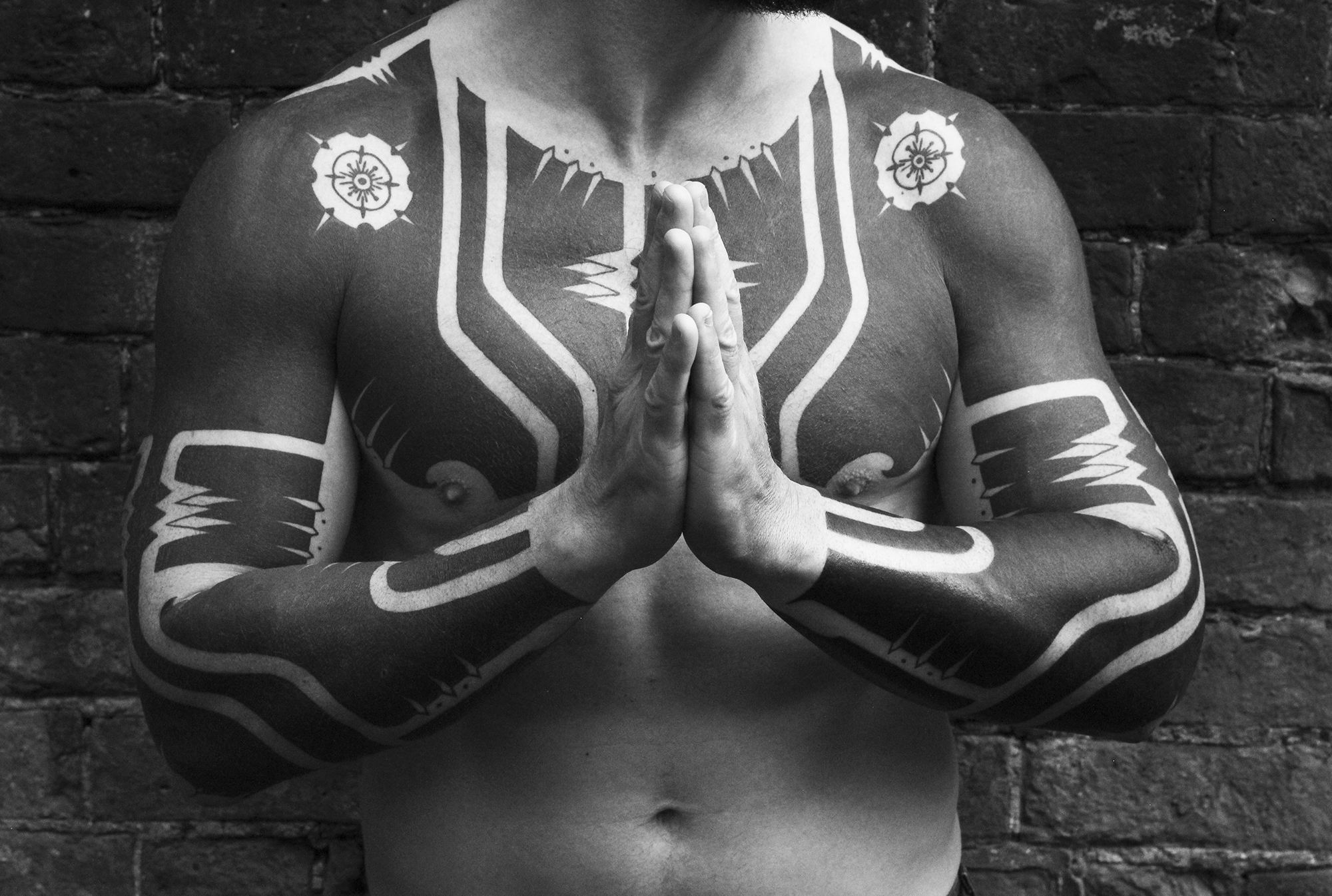
“I like the dystopian; what will the future be? [Like “Blade Runner” and “The Fifth Element”] What would the people look like in the future?” explains Hanumantra about his vision and creation of blackwork as the future of tattooing.
This UK-based tattooist Hanumantra spent a decade traveling with his life and business partner Jo Harrison to various continents and inspired from indigenous tribes of Australia, Polynesia, and beyond. Together, they founded their private studio, UN1TY, a place where it is not only about changing how people look but also how they perceive themselves. It is the process of mindfulness, connection and peace—selectively working with clients, together in a balanced and harmonious relationship.
Having met up with Hanumantra and his family at the London Tattoo Convention, we were curious to know more about his philosophy on tattooing and how his work was not just mimicking tribal art but projecting into the future.
Above: Blackwork of the future by Hanumantra.
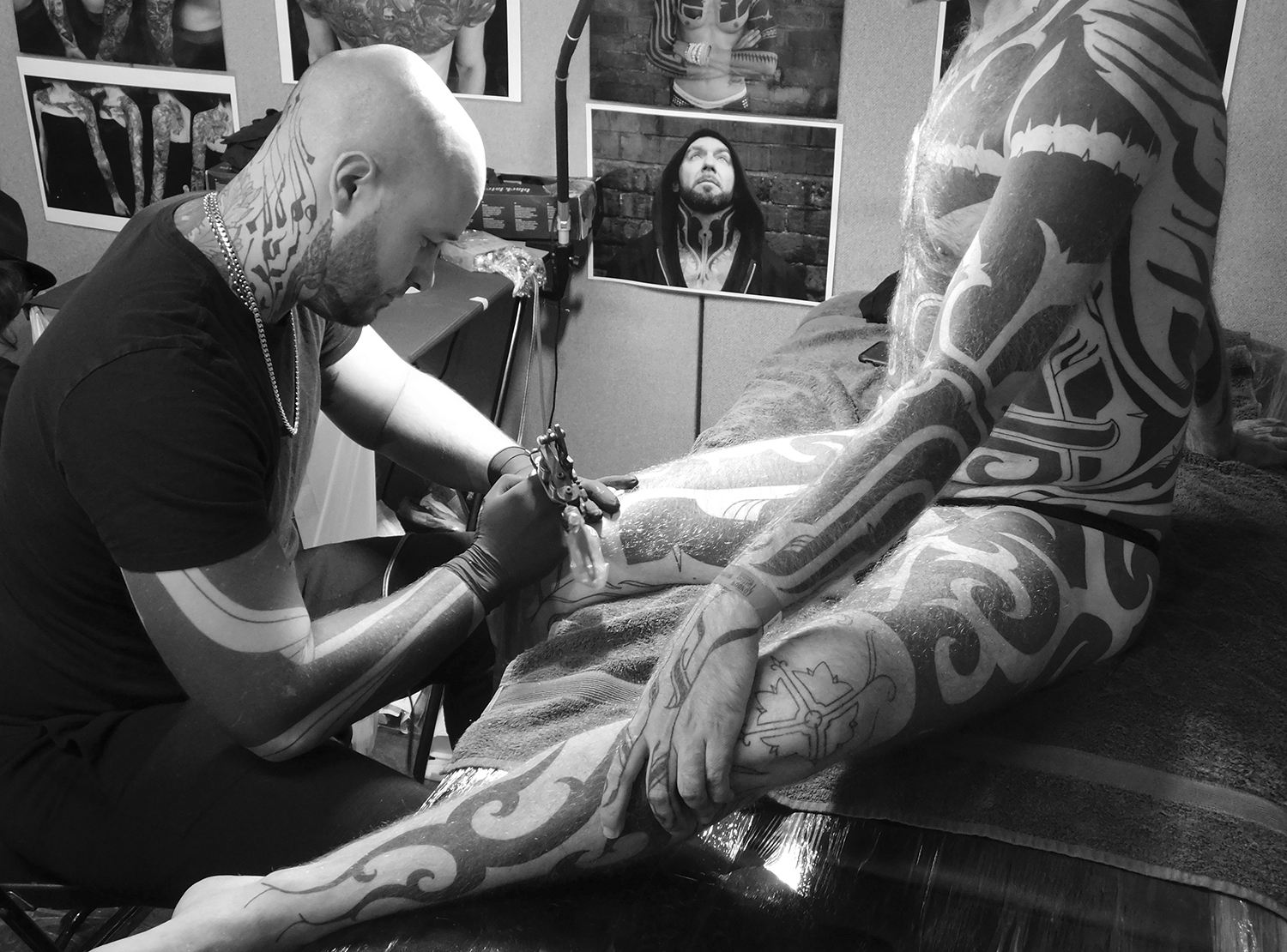
The artist finishing the bodysuit of his client at the London Tattoo Convention.
At 18 years old you left the UK and went to Australia. How was this a life altering experience?
I guess that was my kind of first step out into traveling and a way of gaining my own independence. And then when I was there it was my first a experience being exposed to (a displaced) indigenous culture and I saw a lot of aboriginal artwork … enough to inspire the first one I did [tattoo] that was designed by myself but influenced by the kind of dot-pointillism used in aboriginal work. Again, just being in a cultural climate that is orientated around the ocean, there was a lot of tattoos of different styles and sorts. In particular, the guys I knew from New Zealand or the Samoan islands they had their tattoos and I never had firsthand exposure or experience to people with tattoos with such cultural weight behind them, and it was an eye-opening experience and part of what influenced me to get my first tattoo.
The momentum carried on, as I moved forward spending a long time on the road with my partner Jo Harrison—we went through Central America, North America and Asia. I kind of let in—permeate how it affected my life, my work, throughout the 10 years of traveling.
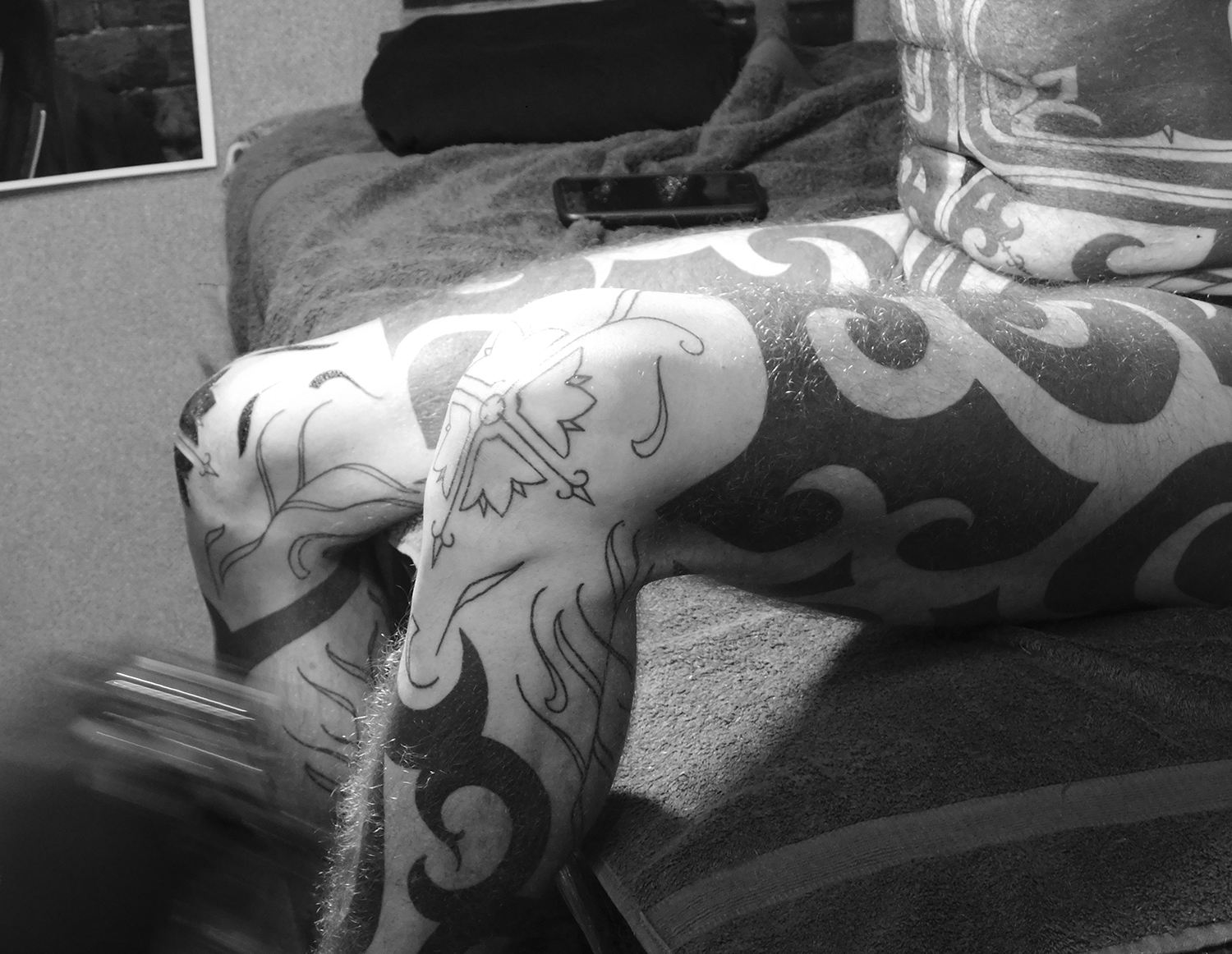
Bodysuit: outlines complete, now the shading will begin.
Please explain a bit more about the cultures that have influenced your tattoo designs?
It is interesting because my work is heavily inspired by indigenous tattooing—I have looked at the Maori tattoos; Samoa, Philippines, Borneo … Micronesian and Polynesian. As much as I have been able to expose myself to it, I have. I’ve looked at literature and the different mediums of information. I really let that come through, but I never wanted to try replicate another culture’s style because it wouldn’t feel authentic to me. I don’t think I could accurately represent what was being said to someone. Does that make sense?
Yes it does. You get inspiration from these cultures and then do your own thing.
Yes definitely. I use that. I look at what resonates with me, bring that in, and the bits I don’t like I let drift away. Early in my career I was pulling that in, but there has been a shift over the years. I try to project my visions of what I think the future of tattooing will be. Try to create them now. Not just trying to create a contemporary look of what tribal tattooing is, but further than that trying to tattoo the tribes of the future.
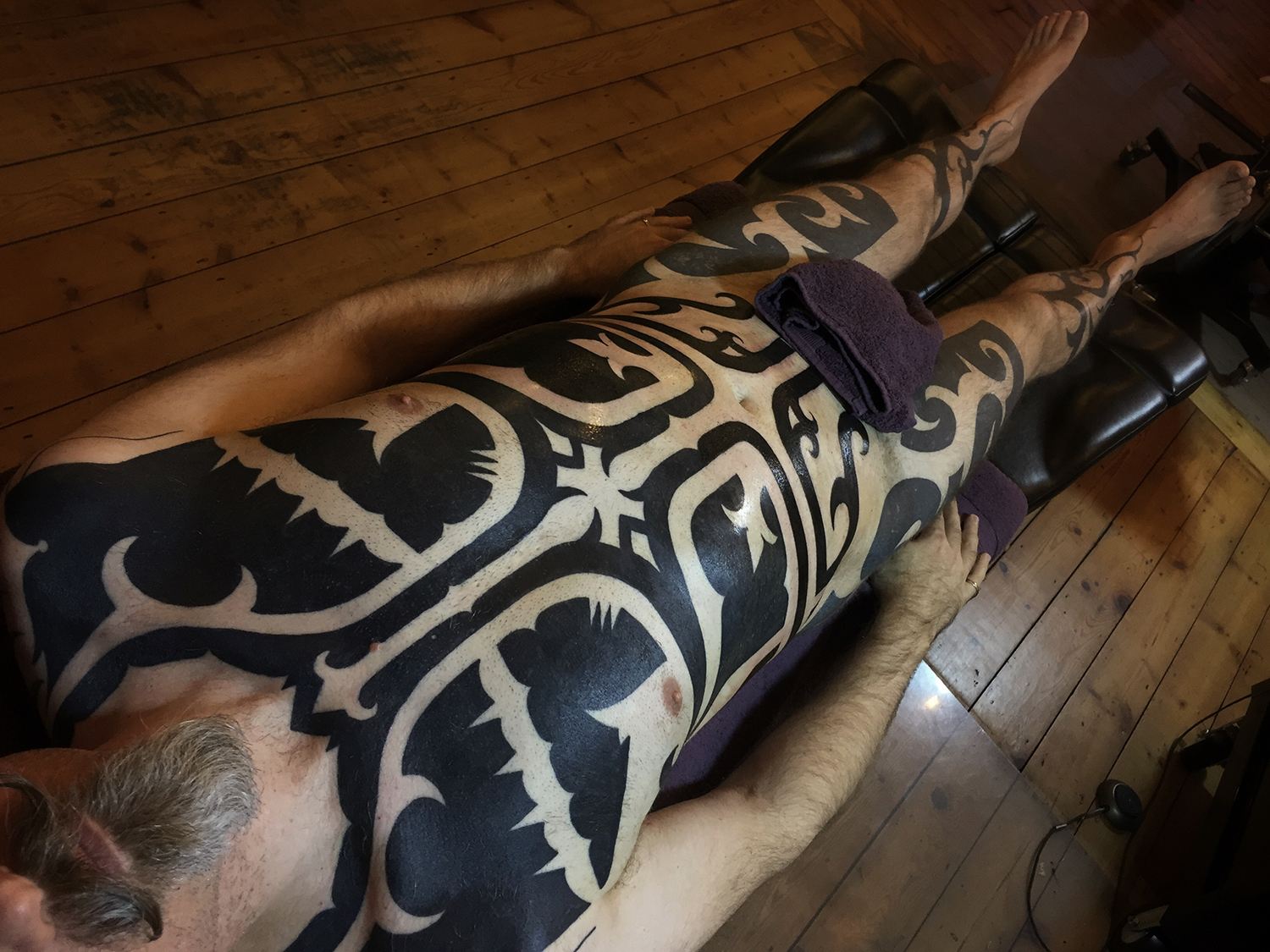
Hanumantra freehands his patterned designs.
How meticulous are you applying the tattoo compositions to your clients’ bodies?
Ridiculously! (Laugh). Sometimes I feel bad for people when they have to stand there for so long. They just stand there and I am drawing. I actually know when people get tired. However, I will not cut corners; I will not speed up the process to accommodate what someone’s patience or tolerance is. Like this “takes as long as it takes.” When someone gets tired by me, we enter an agreement and that agreement is we both want the best out of each other. For me to create the best work I need you to want the best work from me. Together we can make that happen. If one of us is not pulling our weight, it will be apparent.
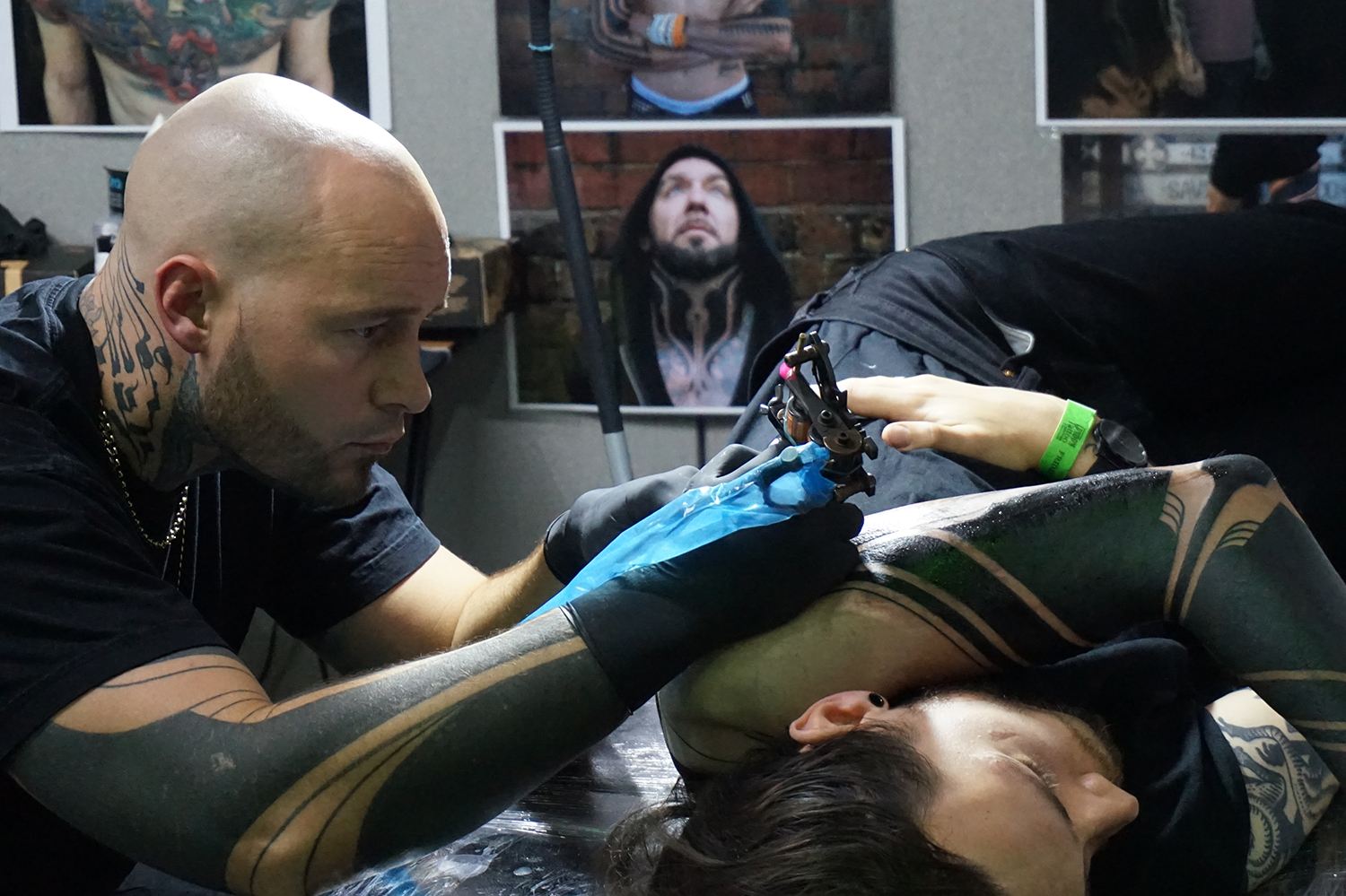
Tattooist heavily focused on the new sleeve for another client.
Not everyone understands or appreciates heavy blackwork. Tell us about your views of this genre—i.e. the choice, lifestyle and philosophy of blackwork.
It is a niche within a niche of tattooing. Maybe tattooing is not a niche as it was 20 years ago, but blackwork is a subculture within the subculture. There is no one thing that going to please everyone. I never really worry about that. I just make sure that what I do, I can articulate and portray as accurately as I can, because then I know the right people (the people who do appreciate it) will resonate with it. I don’t want a disconnect between the people that are coming to me because I’m not being clear with my message. If I hear criticism from other tattooers in regards to their clients approaching for this, I often think the result is because they are not clear enough, concise enough with what it is that they are trying to accomplish. I don’t worry too much about how it is received by the wider public. Everyone is entitled to think how they want to think about something, I am not going to force anything down their throats. If I keep portraying what I do honestly, the right people will find it. If I’m attracting the right people with the right message, I get the best work out of myself—it is a harmonious relationship.
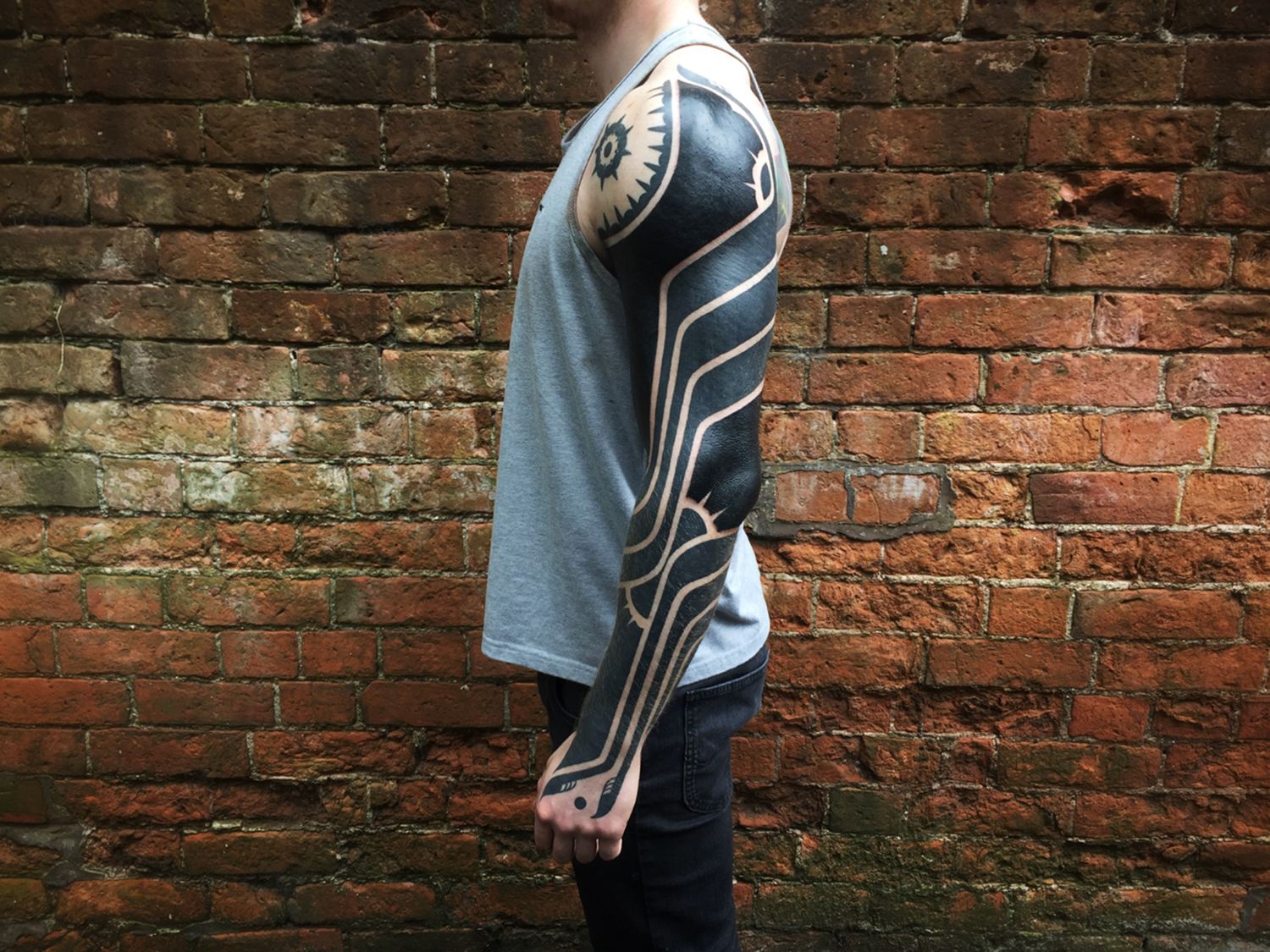
The tribal influences are apparent in the UK tattooist’s work.
It is all about connection.
It is so important. That’s why me and Jo have pulled away from the big studies. We really wanted to focus on the experience we deliver along with the tattoo.
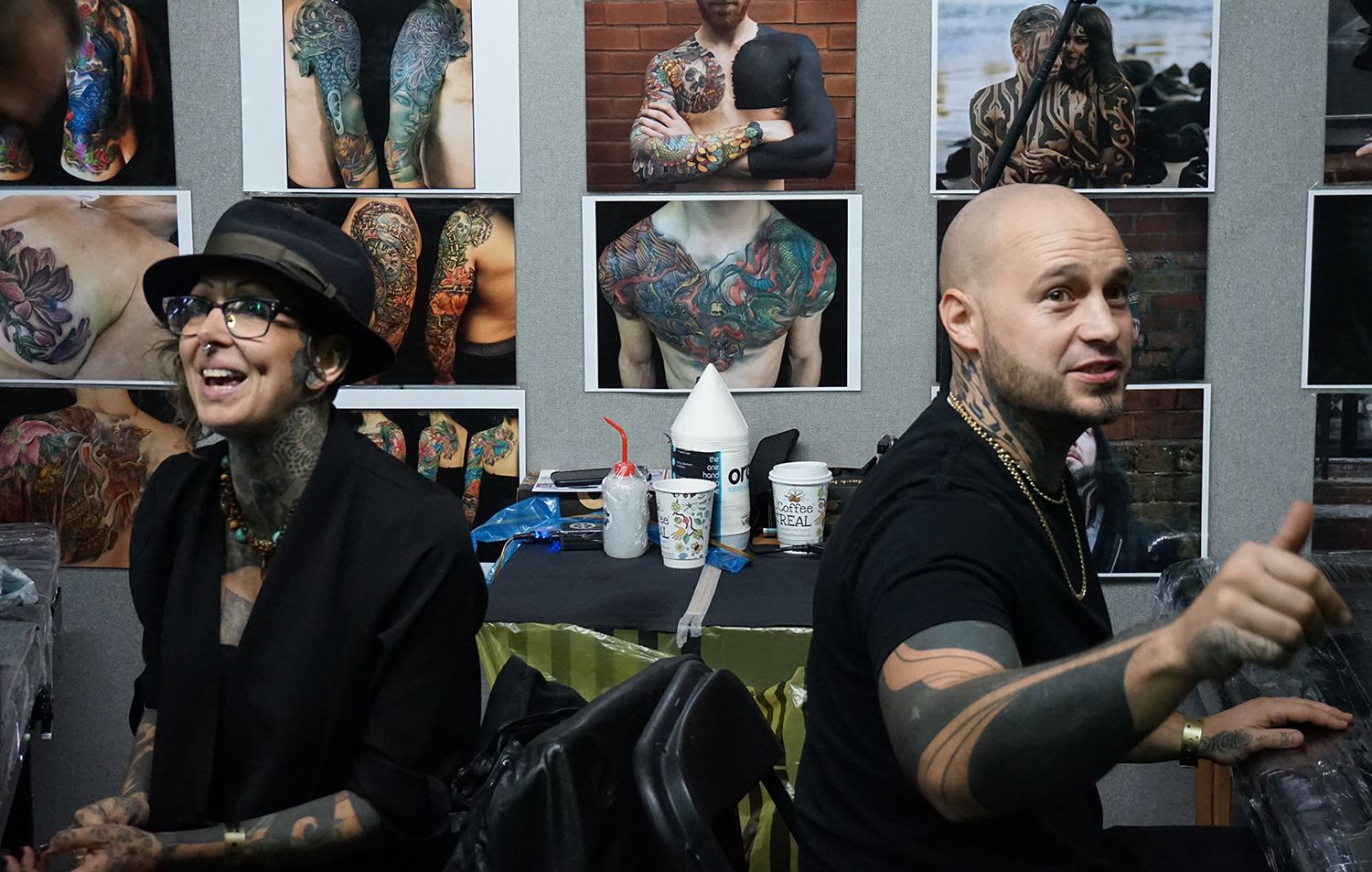
Jo Harrison and Hanumantra, side by side at the London Tattoo Convention.
You have a studio with your partner Jo Harrison, as well as 10 years together and two daughters. Tell us more about your family, and how you are able to balance work and personal life.
That’s an interesting one. We have our private studio, which is … (laugh) [Jo and family also listening and laughing] … the line between work and personal life doesn’t really exist, there is certainly no hard line. It is definitely not a binary situation. It has just merged. The studio is based within our living environment. It is hard to imagine getting up and going to work. Our work is so ingrained in our life, and our life ingrained in our work. It is one big thing. It is bit of a crazy situation. You rarely turn off from it, but that is part of the joy of doing something you love. If we do, we completely remove ourselves—like going camping, no internet—that complete disconnection. That’s not necessarily from work, but from life, that time away to disconnect. As you see my two girls are here [his toddler daughters plus their grandmother at the London convention], there is no solid line in the sand, it is all mingled together. So far it works perfectly.
Images 1, 4, and 6 © Hanumantra All other convention photos and video production © Scene360
